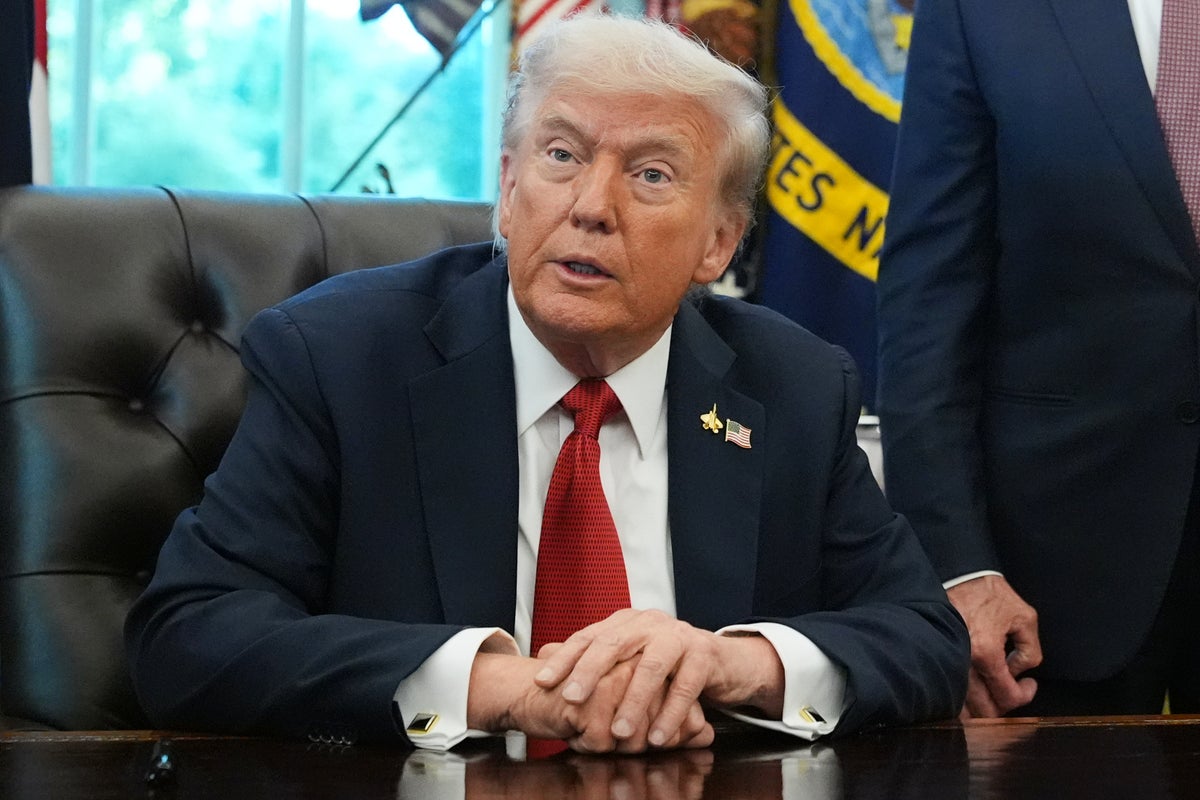
President Donald Trump has threatened mass layoffs and other “irreversible” consequences from the government shutdown — but some in Washington believe that he could be shying away from those plans, according to a report.
Now more than a week into the shutdown, those threats have not manifested, leading to a “growing belief” that it might be another example of “TACO,” – or “Trump Always Chickens Out,” – the Washington Post reported.
When the Office of Management and Budget issued a memo directing agencies to consider reductions in force if a lapse in funding occurred, “it was clear to me that it was absolute bluster and B.S.,” Virginia Democratic Rep. James Walkinshaw told the Washington Post. “And by the way, the federal employees that I represent saw it as such as well.”
The Independent has asked the White House for comment.
There have still been visible changes to the federal workforce. Non-essential services have been suspended. Most federal workers won’t be paid until the shutdown ends, while some who were furloughed may be denied back pay, the president threatened this week, in contradiction with a law he signed in his first term.
Meanwhile, Trump has used the shutdown to further his own policy agenda, such as threatening to cut “Democratic agencies,” cancelling nearly $8 billion in grants for clean energy projects in states that backed Democratic presidential nominee Kamala Harris, and freezing $18 million for infrastructure projects in New York City — home to both Democratic leaders.
In the days leading up to the shutdown, Trump warned: “We can do things during the shutdown that are irreversible, that are bad for them and irreversible by them, like cutting vast numbers of people and cutting things that they like, cutting programs that they like.”
Previous government shutdowns have not led to mass layoffs. Still, on the first day of the shutdown, Vice President J.D. Vance warned that mass reductions may be required “to keep the American people’s essential services continuing to run.”
On Tuesday, Trump furthered these threats, telling reporters that jobs could be permanently slashed. If the shutdown continues, the cuts will “be substantial.” He added: “And a lot of those jobs will never come back.”
The president has yet to act on these threats. Several government employees don’t think he’ll carry ever them out.
A State Department employee considers the potential firings an empty threat. “This is stupid, even for them,” he told the Washington Post. “The bar is in the basement, and they have managed to tunnel under it somehow.”
Similarly, an Agriculture Department worker said she’s grown so accustomed to Trump’s threats to federal workers that she now treats the president’s firing claims as “background noise,” the Post reported.
Trump has backed away from several plans during his second term, giving rise to the “TACO” descriptor.
The acronym first appeared earlier this year in the context of tariffs. Some Wall Street traders used the term to describe the president’s pattern of making trade policy threats that were likely to cause the stock market to dip before he inevitably walked back on that threat, leading to a rebound. For example, after unveiling his so-called “Liberation Day” tariffs in April, the markets plunged. The following week, he ordered a 90-day pause, prompting the market to soar to record highs.
But Trump has walked back on a number of stances beyond trade policies. The Department of Government Efficiency executed sweeping layoffs cuts in the early days of the administration, only to later rehire hundreds of them.
Even this week, Trump suggested he would negotiate with Democrats, who have demanded health care subsidies, to end the shutdown — but then walked it back, insisting they cave before any discussions take place. He wrote on Truth Social: “I am happy to work with the Democrats on their Failed Healthcare Policies, or anything else, but first they must allow our Government to re-open.”
